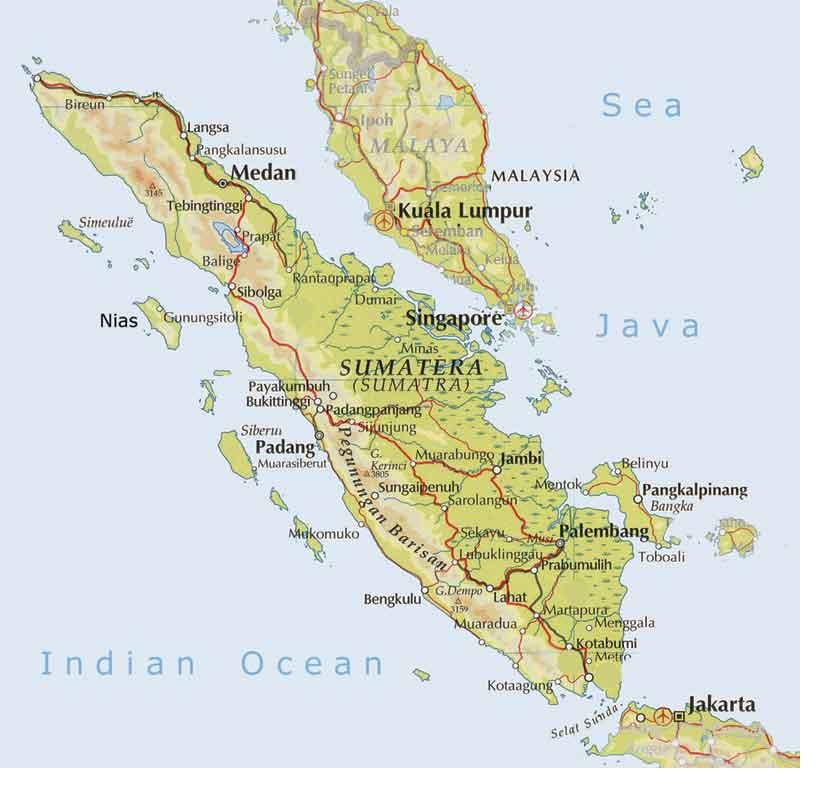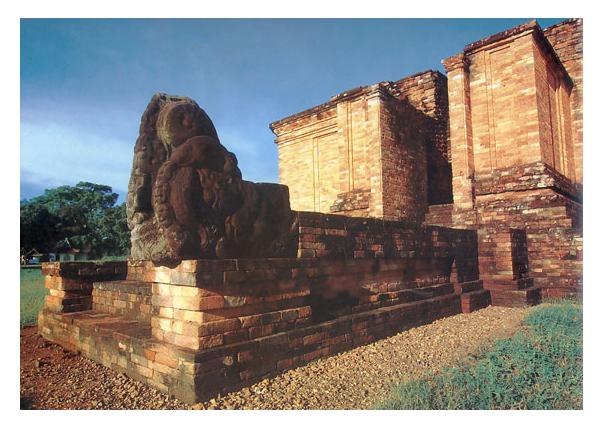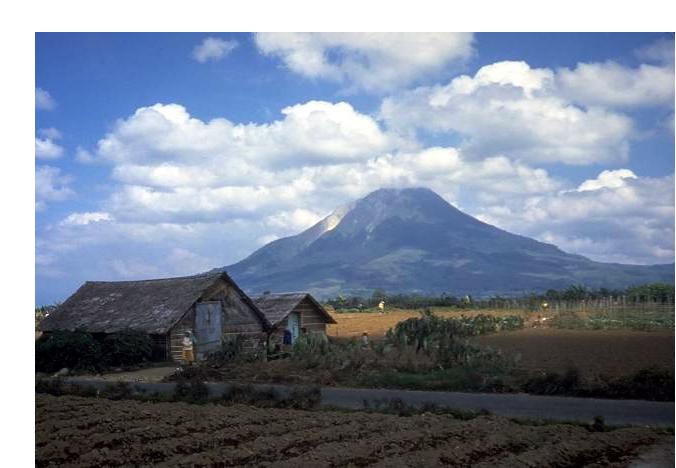April 2014 Sumatra
 |
|
Sumatra at the Center of the World
 According to a possibly apocryphal story, Mandheling coffee got its name due to a misunderstanding between a Japanese soldier and a Sumatran café owner. The soldier asked what kind of coffee he was enjoying. The café owner thought he was being asked who his people were, and answered “Mandhailing”. The Mandhailing (as spelled when referring to the ethnic group) people, closely related to the Batak peoples that have inhabited the interior of Sumatra for over 2,500 years, sell coffee. Coffee is not, however, grown in the Mandhailing province (it is mostly from the Lintong and Aceh provinces). At that time most Sumatran coffee was produced for local consumption. The soldier, after the war and upon returning to Japan, sought out this “Mandheling” coffee by contacting a trader in Sumatra. The trader complied, and a “brand” was created.
According to a possibly apocryphal story, Mandheling coffee got its name due to a misunderstanding between a Japanese soldier and a Sumatran café owner. The soldier asked what kind of coffee he was enjoying. The café owner thought he was being asked who his people were, and answered “Mandhailing”. The Mandhailing (as spelled when referring to the ethnic group) people, closely related to the Batak peoples that have inhabited the interior of Sumatra for over 2,500 years, sell coffee. Coffee is not, however, grown in the Mandhailing province (it is mostly from the Lintong and Aceh provinces). At that time most Sumatran coffee was produced for local consumption. The soldier, after the war and upon returning to Japan, sought out this “Mandheling” coffee by contacting a trader in Sumatra. The trader complied, and a “brand” was created.Coffee, of course, is not native to Sumatra, or even to next door Java whose name is now synonymous with coffee. The Dutch brought coffee trees to these far flung islands in Southeast Asia from their trading post in India on the Malabar Coast. (to read about how coffee reached India, read this newsletter). The trees flourished initially, though Javanese coffee was hit by a rust plague in the late 19th century and much of the coffee produced now is robusta instead of the better tasting arabica. Sumatra and Sulawesi generally produce higher quality coffee than Java.
Sumatra is the earth’s sixth largest island, its eastern shore forms one side of the Strait of Malacca, and its southern tip the Strait of Sunda, making its location strategic to trade between
China and the Spice Islands to the east, and India, Arabia, and Europe to the west. For centuries its position as a crossroads means that it has always been rich linguistically, religiously, and culturally.


It has seen waves of Buddhism, Hinduism, syncretic Buddhism-Hinduism, Islam and Christianity. Indian, Persian, Arab, Portuguese, Dutch, and English adventurers have invaded at various times, with varying degrees of success, to gain access to the Spice Islands and to control the important east-west commerce which passed (and still passes) through the Strait of Malacca. Old Malay, which evolved into today’s common tongue of Indonesian was influenced by Sanskrit, and as it evolved into today’s modern language it acquired Persian and Arab influences.
For several centuries Sumatra was home to a rich kingdom that controlled most of the island, parts of Java, and the greater part of the Malay Peninsula. The Sriwijayan king, Balaputra, dedicated a Buddhist temple in Pala, Bengal, India. The primary capital of the Sriwijayan empire, Palembang, was an important center of Buddhist and Sanskrit scholarship. It traded with China and its envoys and traders ventured as far as Arabia and Madagascar.
>
Two of the main Sumatran products traded by the Sriwijayans to China were benzoin and camphor, derivatives from trees. These were produced by the Batak and related groups, including the Mandhailing. These groups live around Lake Toba, in northern Sumatra, which is an important coffee growing region. The Toba caldera is a phenomenon in itself, being the site of one of the earth’s most cataclysmic events (but we will leave that story for another time).
Sriwijaya, fell in the 13th century after about 500 years of regional dominance. Raids by its erstwhile southern Indian ally, the Chola weakened it, and Palembang succumbed to Javanese rivals. Sriwijaya was lost to memory, even in Sumatra, until 1920, when a French scholar realized that such the kingdom must have existed, primarily based on records in China.
While the "terroir" of Sumatra helps to make this coffee unique, just as important is the way it is processed. Almost all the coffee is grown on small-holdings. Instead of letting the pulp dry on the bean, as in natural processing, the skin is removed right after harvest in a hand-cranked drum. The bean and remaining mucilage is left to ferment overnight, after which the fruit can be easily washed off the bean. The parchment remains and the beans are sold to a collector who will then deliver the coffee to the coffee mill.

This “semi-wet” processing reduces the acidity of the coffee and produces the earthy notes that make Sumatran coffee distinctive. It must be sorted carefully, though, as the possibility of over fermenting is high. We work with Pawani, one of the oldest and best exporters in Sumatra (and possibly the one who first sourced the Mandheling coffee for the former Japanese soldier). Our Sumatra Mandheling “Pawani Private Reserve” has perennially been one of our best selling coffees. Now you know a little about the exotic island it comes from.


